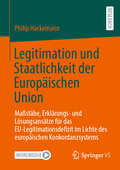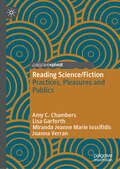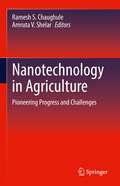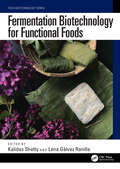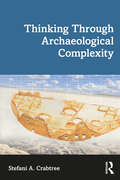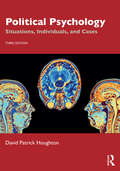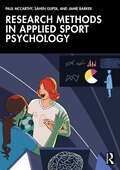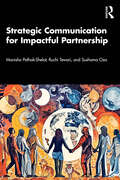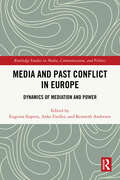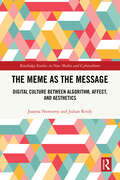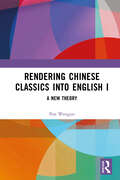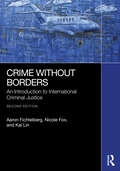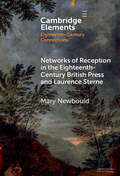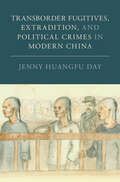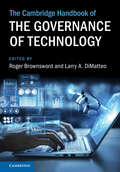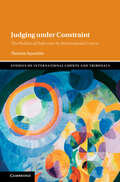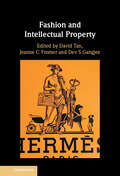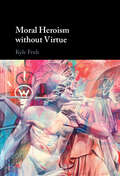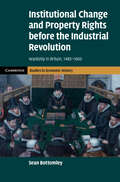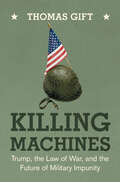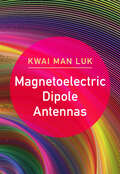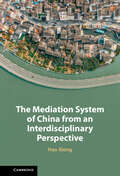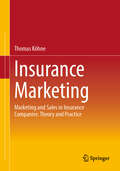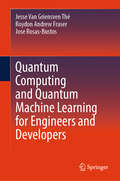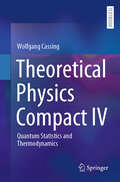- Table View
- List View
Legitimation und Staatlichkeit der Europäischen Union: Maßstäbe, Erklärungs- und Lösungsansätze für das EU-Legitimationsdefizit im Lichte des europäischen Konkordanzsystems
by Philip HackemannIn diesem Buch wird untersucht, inwiefern das vielfach angemahnte Legitimationsdefizit der Europäischen Union womöglich auch woanders begründet liegt als in der einschlägigen Literatur zumeist angenommen: So kommt der Autor zu dem Schluss, dass die EU aufgrund des Ausmaßes ihrer Hoheitsrechte und dem Grad ihrer Verselbstständigung bereits an denselben Legitimationsmaßstäben gemessen werden muss wie staatliche Demokratien. Statt aber auf formal-juristische, institutionelle Feinheiten oder eine vermeintlich ex-ante fehlende europäische Öffentlichkeit und Identität wird ihr Legitimitätsdefizit vielmehr auf ihre mangelhafte Politisierung zurückgeführt. Die EU als solche erfüllt demnach grundsätzlich alle wesentlichen strukturellen Kriterien eines demokratischen Staates (Polity), leidet aber darunter, dass diese bisher nicht mit politischem Leben (Politics) gefüllt wurden. Insbesondere fehlt den Bürgerinnen und Bürgern durch ihre traditionelle Konkordanz- bzw. Konsenspolitik in der Praxis eine echte, sichtbare und glaubhafte Auswahl zwischen Regierung und Opposition. Dies müsste durch eine Mehrheitsdemokratie ersetzt werden, um nicht nur den direkten Einfluss der Bürgerinnen und Bürger zu stärken, sondern auch den Diskurs von schädlichen strukturell-antagonistischen zu konstruktiven inhaltlich-agonistischen Debatten zu verschieben – und damit letztendlich auch eine politische Öffentlichkeit in Europa zu schaffen.
Reading Science/Fiction: Practices, Pleasures and Publics
by Lisa Garforth Amy C. Chambers Miranda Jeanne Iossifidis Joanna VerranThis book explores the relationship between reading science in fiction and engaging with science. Focusing on embodied readers and empirical approaches to fiction reading, the authors examine contemporary social, cultural, biographical and political contexts in which science fictions come to matter. Drawing together a distinctive set of research studies and conceptual resources, the book outlines theories, epistemologies and methodologies for understanding how and why we read science fictions and fictions about science.
Nanotechnology in Agriculture: Pioneering Progress and Challenges
by Ramesh S. Chaughule Amruta V. ShelarThe book discusses nanomaterial interactions with plants and their potential benefits for agriculture. It stands as an authoritative resource for a broad community, describing how Nano formulations of various types of agrochemicals in agriculture are rapidly expanding among the scientific and non-scientific community. The purpose of this book is to provide comprehensive information about the development of synthesis and scaling-up, future scope, current challenges, potential risks assessment and the legal requirements for regulating nanomaterial-based agrochemicals for agricultural sustainability. The book includes the application of Nano chemicals as Nano primers for seed germination, Nano fertilizers to increase crop yields, Nano pesticides for insect pest management, Nano fungicides, Nano herbicides, Nano nutrient, and Nano sensors for tracking crop and soil health conditions, including detecting agrochemicals. In addition, the authors discuss Nano enabled agrochemicals in relation to their toxicological implications in agroecosystems, as well as risk assessment and registration policies for ensuring the safety of nanomaterials used in farming.
Fermentation Biotechnology for Functional Foods (Food Biotechnology Series)
by Kalidas Shetty Lena Gálvez RanillaFermentation-based processing advanced with global food systems as humanity started to organize the domestication of agriculture from plant and animal sources. These advances emerged across regions of the world from river valley civilizations in Asia (Mesopotamia, India and China) and Africa (Egypt) to Meso-American civilizations. As food crops and animal foods emerged from domestication to advancements in post-harvest processing stages, growth of invisible microbial systems led to modified foods that aligned with local palates of the communities. This in several cases became part of food systems, as it added a mode of preservation and improved the food quality that was preferred by each community. This is how the early genesis of fermented foods from grains, fruits and vegetables to animal meats and milk products became an integral part of early civilizations over 4000 years ago and has now carried over and further developed across many countries in every region of the world. The foundations of these food fermentations are now an integral part of modern food advances as preferred food substrates and the microbial interactions that drive the metabolic processes in defined food matrixes are being scientifically advanced.This book focuses on bringing together diverse emergences and advancements of fermented foods across different regions of the world and how the metabolic processes associated with fermentation in several cases add health-relevant functional qualities across different food matrixes. This book contains 26 chapters from the Americas, Africa, Europe and Asia, bringing together the fermentation processes of diverse food substrates and their microbial processing and in several cases providing health-targeted functional benefits.Key Features: Discusses the rationale and basis of fermented food systems from across 26 diverse regions of the world with examples from the Americas, Asia, Europe and Africa Presents historical plant and animal food substrates and the metabolic processes of their fermentation across traditions of a range of countries Covers traditional food fermentations across diverse food substrates that have potentially health-relevant functional benefits Reflects and presents the role of historical, cultural and traditional food concepts of a diverse range of countries with many novel examples and how they have influenced health-relevant functional benefits Discusses the relevance of metabolic concepts of fermented and functional foods in advancing healthy food concepts This book is important for food scientists, nutritionists and the health care sector, but beyond this, it is also relevant for a wider global audience interested in a holistic health approach from food systems where examples of fermentation experience can inform new natural processing strategies to improve food quality and health.
Thinking through Archaeological Complexity
by Stefani A. CrabtreeThinking Through Archaeological Complexity explores how archaeologists can engage with complex adaptive systems, examining dynamic interactions between humans and environments across space and through time. It offers a roadmap for integrating theory, method, and data through a complexity science lens.This volume bridges archaeology and complexity science, offering a transdisciplinary framework for understanding long-term socio-ecological dynamics. It provides a substantive overview of how complex adaptive systems science is used in archaeology. Drawing from case studies in the Ancestral Pueblo Southwest, it demonstrates how tools like agent-based modeling, ecological and social network analysis, and settlement scaling reveal emergent patterns in the archaeological record. The book critically examines concepts such as resilience, adaptation, innovation, and transformation, offering alternatives to overly linear narratives. Emphasizing methodological transparency, it provides practical guidance for scholars interested in modeling, data integration, and working across disciplinary boundaries while grounding in theoretical pluralism. By situating archaeological knowledge within broader scientific conversations, the book encourages readers to reimagine the past not as static or collapsed, but as complex, entangled, and instructive for contemporary challenges.This book is essential reading for students, researchers, and practitioners in archaeology as well as complexity science. It will also appeal to scholars in anthropology, environmental studies, geography, and network science interested in long-term human-environmental dynamics and the application of complex systems approaches in historical contexts.
Political Psychology: Situations, Individuals, and Cases
by David Patrick HoughtonWhat shapes political behavior more: the situations in which individuals find themselves, or the internal psychological makeup—beliefs, values, and so on—of those individuals? This is perhaps the leading division within the psychological study of politics today. Political Psychology: Situations, Individuals, and Cases, 3rd edition, provides a concise, readable, and conceptually organized introduction to the topic of political psychology by examining this very question. Using this situationism—dispositionism framework—which roughly parallels the concerns of social psychology and cognitive neuroscience—this book focuses on such key explanatory mechanisms as emotion, cognition, neuropolitics, genopolitics, personality, beliefs and social identities to explore topics ranging from voting behavior and racism to terrorism and international relations.The new edition is completely revised and contains new chapters to introduce and conclude the book, as well as fundamentally updated material on (for instance) foreign policy decision-making and electoral choice. Houghton has also updated the text to bring us into the era of Donald J. Trump, to pick apart the results of the 2024 US presidential election, and to include up-and-coming research in the areas of neuropolitics and genopolitics. Houghton's clear and engaging examples directly challenge students to place themselves in both real and hypothetical situations which involve intense moral and political dilemmas. This highly readable text will provide students with the conceptual foundation they need to make sense of the rapidly changing and increasingly important field of political psychology.
Research Methods in Applied Sport Psychology
by Paul McCarthy Jamie Barker Sahen GuptaResearch methods (and statistics) underpin much of the work undertaken in applied sport psychology settings and remain at the heart of scholarship in undergraduate and postgraduate courses and professional practice training. Students benefit from learning to understand, synthesise, and critique research in their field of study; however, to learn these skills, they need suitable precepts to guide their learning. This new textbook combines five main areas within applied sport psychology: 1. conceptual issues about science and knowledge; 2. research process (ethics, planning research, etc.); 3. methods (designs, sampling, surveys, interviews, etc.); 4. data analysis (parametric/nonparametric tests, qualitative methods etc.); and 5. reporting research (writing a journal article). Research Methods in Applied Sport Psychology begins with an introduction to conceptual issues within sport and exercise psychology to orient the student about science and knowledge before examining the planning, designing, and starting of research projects. The book then goes on to explore the various methods and issues that arise in research then introduces data analysis for qualitative and quantitative research. This new text, the first to examine research methods specifically for sport psychology is key reading for all sport and exercise psychology undergraduate and post -graduate students as well as invaluable reading for students on sport and exercise science courses who are set to undertake a research project.
Strategic Communication for Impactful Partnership
by Manisha Pathak-Shelat Ruchi Tewari Sushama OzaFoundational to partnership-building, strategic communication can result in meaningful and sustainable social impact. This book offers insights into the significance of strategic communication to nurture and sustain partnerships between the civil society, government, and market by aligning their complementary strengths.Grounded in global research and informed by theory and industry practices, the book provides an in-depth analysis of important aspects critical in building multi-sectoral partnerships. It underlines why successful and sustainable partnerships must be initiated with a clear and shared vision, proper planning, and nurtured with care while employing strategic communication to facilitate the entire process. Through clearly articulated case studies, practical tools and techniques, and adaptable frameworks, the authors demonstrate how communication must be intentionally designed and responsive to evolving contexts and how these tools and strategies can be applied in one’s professional work.This book will be of great interest to researchers, academics, and professionals in communication studies, public relations, organisational communication, governance, public policy and administration, political science, sociology, and business and management studies.
Media and Past Conflict in Europe: Dynamics of Mediation and Power (Routledge Studies in Media, Communication, and Politics)
by Eugenia Siapera Kenneth Andresen Anke FiedlerFocusing on how the history of past conflicts is mediated in the present and recent past in six European countries, this book explores media processes as they intersect with power dynamics and hegemonic narratives of history and historical memory.The analysis centers around six countries that have experienced past conflict and traumatic past histories–Bosnia and Herzegovina, Cyprus, Germany, Greece, Ireland, and Kosovo–selected based on the type of conflict (emanating from WWII, authoritarian past, colonial past, interethnic conflict, or communist past) and its ongoing relevance. Focusing on the mediation of past conflict, the book revolves around the following questions: How do countries that have gone through historical trauma mediate this troubled past? How do they navigate processes of production, representation, and reception? How do journalists negotiate the competing demands of professional values, political tensions, and the emotional fallout of conflict and trauma? How do audiences/publics engage with content that may misrepresent their community or experiences? How do representations of past conflict change over time? How are the mediations of the past involved in present-day politics?Setting out in each chapter the implications of their analysis for journalistic education and practice, the book will attract readers among academics in the area of media and conflict and media and memory; students of media, communications, and journalism; and journalists who write on past conflict and commemoration, as well as those writing and researching on the six countries that form the case studies.
The Meme as the Message: Digital Culture Between Algorithm, Affect, and Aesthetics (Routledge Studies in New Media and Cyberculture)
by Joanna Nowotny Julian ReidyThis book sheds light on the phenomenon of memes, covering everything from pandemic humour to far-right propaganda, from feminist memes to algorithmic censorship. Memes are far more than light entertainment - they are complex cultural artefacts that play a role in politics, in art, and in platform economics.Taking a cultural studies perspective, the authors analyse individual memes in entertaining case studies, systematising their findings in order to redefine this digital form of communication. Chapters connect memes with other digital phenomena such as trolling, and combine extensive close readings of exemplary individual memes with regards to form and aesthetics with an acute awareness of power dynamics and other context phenomena surrounding memes. The book develops an innovative theoretical approach that presents the term “memesis” to capture the very specific quality of meme production and reception as a form of collective creative rewriting of a template in accordance with algorithmic logic.Offering an important contribution not only to the still young field of meme studies but also to the general negotiations of questions around digital literacy, this book will interest not only scholars and students of digital media, visual communication, cultural studies, and media and politics but anyone with a keen interest in digital culture - and how it shapes our lives.
Rendering Chinese Classics into English I: A New Theory
by Pan WenguoThis first volume of a three-volume encyclopedic set explores Chinese–English translation through Chinese cultural perspectives and modern translation theories.The volume provides essential context for the translation of Chinese classics while offering new insights into cultural translation. It covers three key areas: traditional Chinese cultural systems and their core principles, modern approaches to translating Chinese culture, and specialized theories for translating Chinese classics – including their cultural context, necessity, and theoretical foundations.This work will serve as an invaluable resource for scholars and students of Chinese–English translation and Chinese studies seeking practical guidance on translation methodology, as well as for translators working with classical Chinese texts.
Crime Without Borders: An Introduction to International Criminal Justice
by Aaron Fichtelberg Kai Lin Nicole FoxThis book introduces students to the challenges related to international crime and punishment and the ways that criminal justice systems have sought to confront them. The dismantling and opening up of borders by technology, transportation, international trade, and the global flow of labor and capital have allowed those engaging in criminal behavior to work across borders in ways that challenge the traditional nation-state and its criminal justice system, making the study of international crime and justice increasingly relevant. This book not only covers the nuts and bolts of international crime and law enforcement but also raises abstract, theoretical issues for debate and asks critical questions about the ideal ways to think about international criminal justice problems. Contemporary topics such as war crimes, genocide, crimes against humanity, terrorism, drug smuggling, human trafficking, financial crimes, environmental crimes, and cybercrime are addressed, and connections between globalization, politics, and criminal justice reflect the modern realities of international and transnational crime. Following an introductory chapter that presents the dimensions of international criminal justice, the text is organized into two major parts, the first part discussing major international crimes and why people engage in them, and the second part laying out the central structures of the international criminal justice system, including international courts, transnational law enforcement, and aspects of United States criminal justice developed to deal with international crimes. Throughout the book, the authors place global crime within the context of contemporary politics and current events. Pedagogical tools such as summaries of significant international cases, discussion questions, and a thorough bibliography aid reader engagement and understanding. This text is suitable for students in global criminology, international crime, and comparative criminology courses, and researchers and policy-makers concerned with international and transnational crime.
Networks of Reception in the Eighteenth-Century British Press and Laurence Sterne (Elements in Eighteenth-Century Connections)
by Mary NewbouldCriticism and creativity characterised literary reception in eighteenth-century Britain. The press – periodicals, newspapers, and magazines – harboured the reviewing cultures belonging to the emerging professionalisation of literary criticism. It also provided highly fertile ground for creativity, including imitative items inspired by new publications, while critical reviews often incorporated parody. The press fostered experimentation among often anonymous reader-contributors, even while it facilitated the establishment of 'classic' works by recirculating well-known authors' names. Laurence Sterne's reception was energetically shaped by the interaction between critical and creative responses: the press played a major role in forging his status as an 'inimitable' author of note.
Transborder Fugitives, Extradition, and Political Crimes in Modern China (Studies in Legal History)
by Jenny Huangfu DayUncovering a series of landmark but often overlooked extradition cases between China and foreign powers from the 1860s to the 1920s, this study challenges the prevailing conception that political crimes in China were solely a domestic phenomenon. Extradition and extraterritoriality played an important role in shaping laws and regulations related to political crimes in modern China. China's inability to secure reciprocal extradition treaties was historically rooted in the legacy of extraterritoriality and semi-colonialism. Jenny Huangfu Day illustrates how the fugitive rendition clauses in the Opium War treaties evolved into informal extradition procedures and describes how the practice of fugitive rendition changed from the late Qing to Republican China. Readers will gain an understanding of the interaction between international law, diplomacy, and municipal laws in the jurisdiction of political crimes in modern China, allowing Chinese legal history to be brought into conversation with transnational legal scholarship.
The Cambridge Handbook of the Governance of Technology (Cambridge Law Handbooks)
by Roger Brownsword Larry A. DiMatteoIn recent years, the use of AI has skyrocketed. The introduction of widely available generative AI, such as ChatGPT, has reinvigorated concerns for harm caused to users. Yet so far government bodies and scholarly literature have failed to determine a governance structure to minimize the risks associated with AI and big data. Despite the recent consensus among tech companies and governments that AI needs to be regulated, there has been no agreement regarding what a framework of functional AI governance should look like. This volume assesses the role of law in governing AI applications in society. While exploring the intersection of law and technology, it argues that getting the mix of AI governance structures correct-both inside and outside of the law-while balancing the importance of innovation with risks to human dignity and democratic values, is one of the most important legal-social determination of our times.
Judging under Constraint: The Politics of Deference by International Courts (Studies on International Courts and Tribunals)
by Theresa SquatritoAs international courts have risen in prominence, policymakers, practitioners and scholars observe variation in judicial deference. Sometimes international courts defer, whereby they accept a state's exercise of authority, and other times not. Differences can be seen in case outcomes, legal interpretation and reasoning, and remedial orders. How can we explain variation in deference? This book examines deference by international courts, offering a novel theoretical account. It argues that deference is explained by a court's strategic space, which is structured by formal independence, seen as a dimension of institutional design, and state preferences. An empirical analysis built on original data of the East African Court of Justice, Caribbean Court of Justice, and African Court of Human and Peoples' Rights demonstrates that robust safeguards to independence and politically fragmented memberships lend legitimacy to courts and make collective state resistance infeasible, combining to minimize deference. Persuasive argumentation and public legitimation also enable nondeference.
Fashion and Intellectual Property
by David Tan Jeanne C Fromer Dev S GangjeeFashion is a multi-billion-dollar global business, which is not surprising because of our basic need to wear clothes and shoes. The fashion system thrives on ephemerality, novelty, seduction and hedonism. There are countless books on intellectual property law, numerous books on fashion theory, and a few books on fashion law, but hardly any on fashion and intellectual property. This book assembles a constellation of some of the best-known intellectual property scholars around the world to present their analysis of how different aspects of intellectual property laws interact with and regulate the fashion industry. It presents a meticulously curated collection of how intellectual property laws interact with contemporary fashion and culture studies in protecting fashion creations that range from clothing and footwear to textiles. It covers key features of intellectual property rights regimes in the United States, United Kingdom, Europe, Australia, and Asia that include copyright, trademarks, patents and geographical indications. This title is also available as open access on Cambridge Core.
Moral Heroism without Virtue
by Kyle FruhWhat is moral heroism? In this book, Kyle Fruh criticizes virtue-centric answers to this question and builds a compelling alternative theoretical view: moral heroism without virtue. Drawing on real-world examples, psychology, and moral philosophy both ancient and contemporary, he argues that in fact the central achievement of moral heroes is the performance of high-stakes sacrifices, so that moral heroism is clearly not a sign of rare moral attainment among an enlightened few, but is instead something enacted by all sorts of people from all walks of life. He also looks at the question of how we respond to moral heroism, both by honoring it and by recruiting it to our efforts at moral improvement and moral education. His book is for anyone interested in moral excellence, the long philosophical traditions which examine it, and contemporary discussions of morally outstanding actions and agents.
Institutional Change and Property Rights before the Industrial Revolution: Wardship in Britain, 1485–1660 (Cambridge Studies in Economic History - Second Series)
by Sean BottomleySecure property rights are widely considered to be an essential prerequisite for sustained economic development; in Britain it is debated whether they have been secure since the medieval period or only established in the mid-seventeenth century. Within this context, Sean Bottomley examines wardship - the Crown's prerogative right(s) to appropriate landed estates which had descended to a legal minor until they attained their majority, to take custody of the child and, where they were unmarried, to decide their marriage partner. Bottomley demonstrates that this constituted a significant yet grossly inefficient and corrupted source of crown revenue, one that inflicted tangible economic penalties. It was also indicative of the decaying capacity of the early Stuart state and Bottomley concludes that without the constitutional changes of the mid to late seventeenth-century, Britain would not have industrialised in the eighteenth-century.
Killing Machines: Trump, the Law of War, and the Future of Military Impunity
by Thomas GiftWhat causes a Western democratic leader to stop even feigning to value the law of war? Unlike past US presidents, who at least paid lip service to the law of armed conflict, Donald Trump has openly flouted it: pardoning war criminals; denigrating the Geneva Conventions; praising torture; and discarding military norms of restraint. This gripping account depicts how Trump has upended assumptions about America's outward commitment to the law of war, exposing the conditions that make such defiance possible. Drawing on in-depth case studies and original survey analysis, Thomas Gift explains how Trump has relied on right-wing media and allies in Congress to attack the law of war – not in the shadows, but in broad daylight. Killing Machines cautions that Trump's approach is not an aberration – it's a playbook other leaders could follow. This title is also available as Open Access on Cambridge Core.
Magnetoelectric Dipole Antennas
by Kwai Man LukDedicated to a new class of wideband antenna, significantly developed over the past two decades, this book is the ultimate reference on magnetoelectric dipole antennas. The author is world-renowned for his pioneering work on antennas and has continuously developed the magnetoelectric dipole antenna since 2006. With contributions from the author and his students as well as results from research groups worldwide, the development of this novel antenna is fully captured. The theory and design are presented step-by-step, using simple technical explanations, making the contents accessible to readers without specialized training in antenna designs. Including the various applications of the antenna such as communications, global positioning, sensing, radar, medical imaging and IoT, this book endeavours to demonstrate the versatility and interdisciplinary of the antennas. Helping readers to develop sophisticated antennas with this thorough coverage on magnetoelectric dipole antennas, this is the ideal reference for graduate students, researchers, and electrical engineers.
The Mediation System of China from an Interdisciplinary Perspective
by Hao XiongDelivering a much-needed in-depth, interdisciplinary exploration of mediation practices in China, this study removes the common misconception that mediation is merely a mechanical application of norms. It provides a comprehensive understanding of China's mediation practices by blending cultural, social, and legal analyses with detailed case descriptions from fieldwork. Readers will gain insights into the interactive dynamics between legal norms and the social environment in grassroots China. This book helps readers understand mediation and Chinese law within their broader cultural, social, and political contexts, offering insights beyond the purely legal dimension. The book is an invaluable resource for scholars, students, and practitioners in the fields of Chinese law, dispute resolution, and socio-legal studies. It offers a unique perspective that contextualizes mediation within the socio-political landscape, providing readers with a richer, more nuanced understanding of Chinese legal culture.
Insurance Marketing: Marketing and Sales in Insurance Companies: Theory and Practice
by Thomas KöhneThis textbook offers a comprehensive and up-to-date overview of the issues and content of insurance marketing. It is the only book of its kind to provide a broad theoretical foundation with references to the latest research findings and in-depth literature, far beyond previous works on insurance marketing. The application-oriented presentation, the latest legal framework and market developments as well as marketing highlights from insurance companies contribute to the necessary practical relevance. The textbook is aimed at Bachelor's and Master's students, academics and interested professionals.
Quantum Computing and Quantum Machine Learning for Engineers and Developers
by Jesse Van Griensven Thé Roydon Andrew Fraser Jose Rosas-BustosThis book guides readers from the foundations of quantum mechanics through advanced quantum algorithms (such as Shor&’s and Grover&’s) and state-of-the-art machine learning methods. By illustrating how these concepts apply to everyday engineering challenges, ranging from complex optimization and cryptography to high-fidelity simulations, the authors equip readers with the tools they need to develop and deploy quantum-based solutions. Incorporating practical case studies, industry-standard platforms, and tested pedagogical approaches, this resource speaks to both academic researchers and industry professionals, enabling them to seamlessly integrate quantum technologies into their projects and workflow
Theoretical Physics Compact IV: Quantum Statistics and Thermodynamics
by Wolfgang CassingThis book, together with the three other volumes, offers a clear and comprehensive approach to theoretical physics for the entire Bachelor's program. Highlights: Theoretical derivations are linked with characteristic examples, their solutions, typical applications, and are clearly illustrated in figures. The required mathematics is derived within a physical context and transparently explained. Contents: Statistical Ensembles – Identical Particles – Concept of the Statistical Ensemble – Statistical Definition of Entropy – Statistical Ensembles in Equilibrium – Independent Identical Particles – Statistical Mechanics and Thermodynamics – Small Deviations from Equilibrium – The Ideal Fermi Gas – The Ideal Bose Gas – Real Gases – Magnetic and Electric Properties of Matter – Kinetic Theories Target Audience: This book is particularly suitable for Bachelor&’s students in their final year. Prerequisites: Mathematical prerequisites include knowledge in calculus, linear algebra, and complex analysis. The Author: Wolfgang Cassing is a retired Professor of Theoretical Physics at the Justus-Liebig-University Gießen. His expertise lies in the phase-space dynamics of classical and quantum many-body systems, which he incorporated into his textbook "Transport Theories for Strongly-Interacting Systems". His current textbook series Theoretical Physics Compact also includes Classical Mechanics, Electrodynamics, and Quantum Mechanics.
